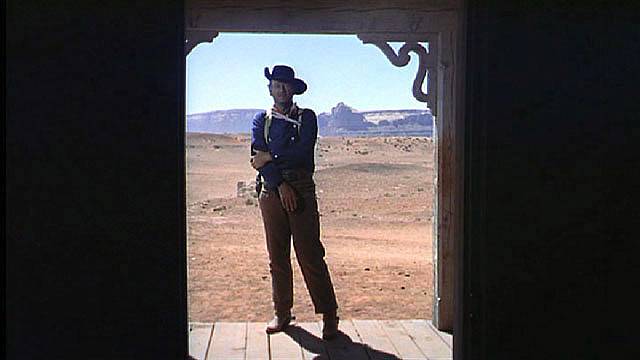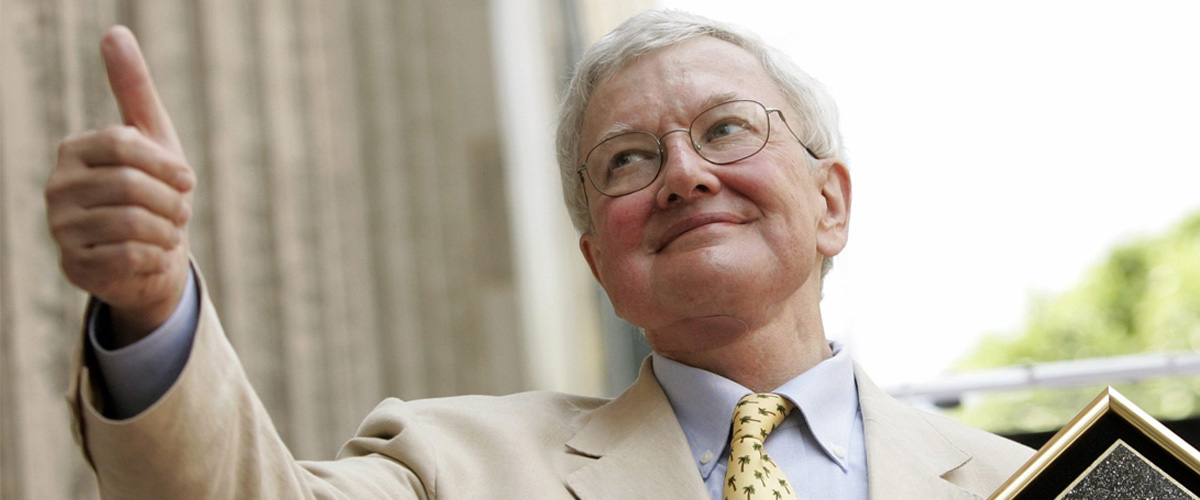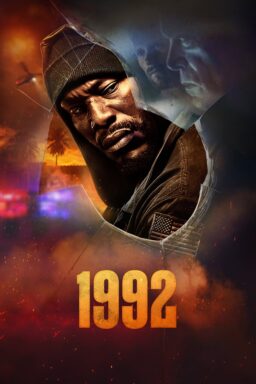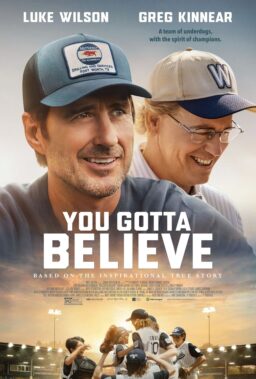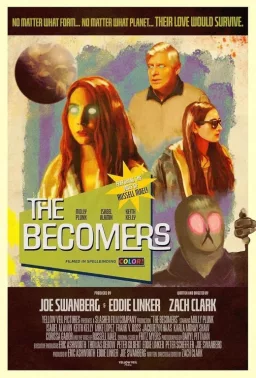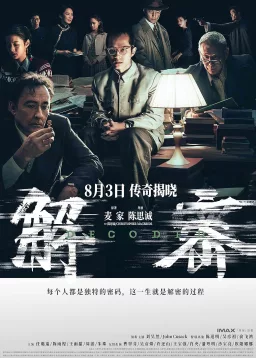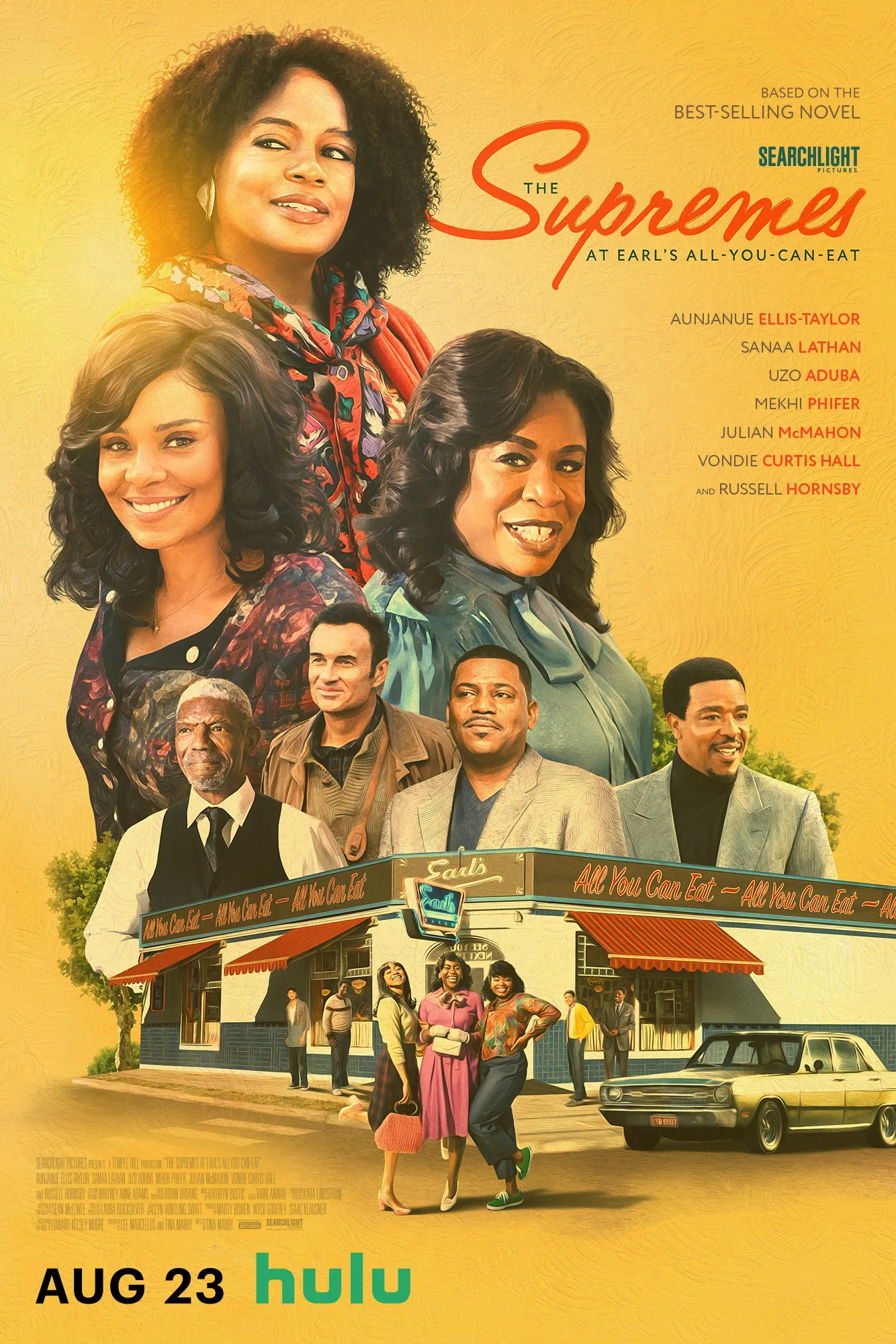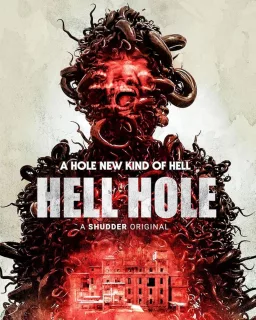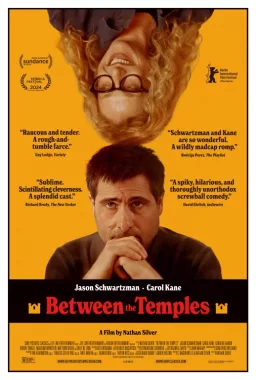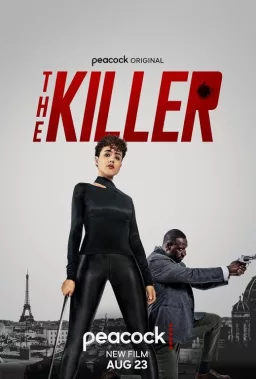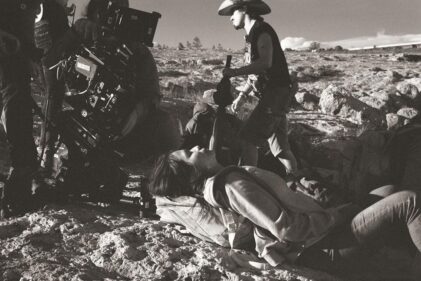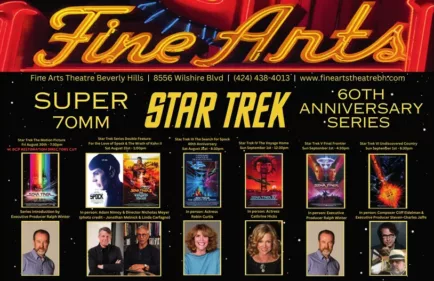John Ford’s “The Searchers” contains scenes of magnificence, and
one of John Wayne‘s best performances. There are shots that are astonishingly
beautiful. A cover story inNew
Yorkmagazine called it the
most influential movie in American history. And yet at its center is a
difficult question, because the Wayne character is racist without apology–and
so, in a less outspoken way, are the other white characters. Is the film
intended to endorse their attitudes, or to dramatize and regret them? Today we
see it through enlightened eyes, but in 1956 many audiences accepted its harsh
view of Indians.
The film is about an obsessive quest. The niece of Ethan Edwards
(Wayne) is kidnapped by Comanches who murder her family and burn their ranch
house. Ethan spends five years on a lonely quest to hunt down the tribe that
holds the girl Debbie (Natalie Wood)–not to rescue her, but to shoot her dead,
because she has become “the leavin’s of a Comanche buck.” Ford knew that his
hero’s hatred of Indians was wrong, but his glorification of Ethan’s search
invites admiration for a twisted man. Defenders of the film point to the famous
scene where Ethan embraces his niece instead of killing her. Can one shot
redeem a film?
Ethan’s
quest inspired a plot line in George Lucas’ “Star Wars.” It’s at the center of
Martin Scorsese’s “Taxi Driver,” written by Paul Schrader, who used it again in
his own “Hard Core.” The hero in each of the Schrader screenplays is a loner
driven to violence and madness by his mission to rescue a young white woman who
has become the sexual prey of those seen as subhuman. Harry Dean Stanton’s
search for Nastassja Kinski in Wim Wenders’ “Paris, Texas” is a reworking of
the Ford story. Even Ethan’s famous line “That’ll be the day” inspired a song
by Buddy Holly.
“The
Searchers” was made in the dying days of the classic Western, which faltered
when Indians ceased to be typecast as savages. Revisionist Westerns, including
Ford’s own “Cheyenne Autumn” in 1964, took a more enlightened view of native
Americans, but the Western audience didn’t want moral complexity; like the
audience for today’s violent thrillers and urban warfare pictures, it wanted
action with clear-cut bad guys.
The
movie was based on a novel by Alan LeMay and a script by Ford’s son-in-law
Frank Nugent, the onetime film critic who wrote 10 Ford films, including “She
Wore a Yellow Ribbon” and “Wagon Master.” It starred John Wayne, who worked
with “Pappy” Ford in 14 major films, as a Confederate soldier who boasts that
he never surrendered, who in postwar years becomes a wanderer, who arrives at
the ranch of his brother Aaron (Walter Coyt) and his wife Martha (Dorothy Jordan)
under a cloud: He carries golden coins that may be stolen, and Sheriff Sam
Clayton (Ward Bond) says he “fits a lot of descriptions.”
It
is clear from the way Ethan’s eyes follow Martha around the room that he
secretly loves her. His hatred of Indians flares the moment he meets Martin
Pawley (Jeffrey Hunter): “Hell, I could mistake you for a half-breed.” Martin
says he’s “one-eighth Comanche.” Ethan rescued young Martin when his family was
killed by Indians, and left him with Martha and Aaron to be raised, but it’s
clear he thinks one-eighth is too much. When Martin insists on joining Ethan’s
search for the captured Debbie, Ethan says “I give the orders” and treats the
younger man with contempt. In a saloon, Ethan pours out drinks but snatches
away Martin’s glass, snarling “Wait’ll you grow up.” Martin at this point has
been a ranch hand, is engaged to be married, has been on the trail with Ethan
for years. Does Ethan privately think it’s dangerous for a “half-breed” to
drink? One of the mysteries of “The Searchers” involves the relationship
between Ethan and Martin on the trail. Living alone with each other for months
at a time, sleeping under the stars, what did they talk about? How could they
share a mission and not find common cause as men?
Martin’s
function on the trail is to argue for Debbie’s life, since Ethan intends to
find her and kill her. The younger man also figures in a romantic subplot
awkwardly cobbled on to the main story. He is engaged to marry Laurie (Vera
Miles), the daughter of friendly Swedish neighbors. Ford goes for cornball
humor in scenes where Martin writes to Laurie only once in five years, and in
that letter makes light of having mistakenly purchased a “squaw bride.” Martin
returns on the very day when Laurie, who never expected to see him again, is
scheduled to marry Charlie (Ken Curtis), a hayseed, and the men fight for the
women in a sequence that would be more at home in “Seven Brides for Seven
Brothers” than in an epic Western.
“The
Searchers” indeed seems to be two films. The Ethan Edwards story is stark and
lonely, a portrait of obsession, and in it we can see Schrader’s inspiration
for Travis Bickle of “Taxi Driver;” the Comanche chief named Scar (Henry
Brandon) is paralleled by Harvey Keitel’s pimp named Sport, whose Western hat
and long hair cause Travis to call him “chief.” Ethan doesn’t like Indians, and
says so plainly. When he reveals his intention to kill Debbie, Martin says “She’s
alive and she’s gonna stay alive!” and Ethan growls: “Livin’ with Comanches
ain’t being alive.” He slaughters buffalo in a shooting frenzy, saying, “At
least they won’t feed any Comanche this winter.” The film within this film
involves the silly romantic subplot and characters hauled in for comic relief,
including the Swedish neighbor Lars Jorgensen (John Qualen), who uses a
vaudeville accent, and Mose Harper (Hank Worden), a half-wit treated like a
mascot. There are even musical interludes. This second strand is without
interest, and those who value “The Searchers” filter it out, patiently waiting
for a return to the main story line.
Ethan
Edwards, fierce, alone, a defeated soldier with no role in peacetime, is one of
the most compelling characters Ford and Wayne ever created (they worked
together on 14 films). Did they know how vile Ethan’s attitudes were? I would
argue that they did, because Wayne was in his personal life notably free of
racial prejudice, and because Ford made films with more sympathetic views of
Indians. This is not the instinctive, oblivious racism of Griffith’s “Birth of
a Nation.” Countless Westerns have had racism as the unspoken premise; this one
consciously focuses on it. I think it took a certain amount of courage to cast
Wayne as a character whose heroism was tainted. Ethan’s redemption is intended
to be shown in that dramatic shot of reunion with Debbie, where he takes her in
his broad hands, lifts her up to the sky, drops her down into his arms, and
says, “Let’s go home, Debbie.” The shot is famous and beloved, but small
counterbalance to his views throughout the film–and indeed, there is no
indication be thinks any differently about Indians.
John
Ford (1895-1973) was Hollywood’s greatest chronicler of American history, and
there was a period when his “The Grapes of Wrath” (1940) and not “Citizen Kane”
was cited as the best American film. He worked on his first film in 1914, and
was directing by 1917. He had an unrivaled eye for landscape, and famously used
Monument Valley as the location for his Westerns, camping out with cast and
crew, the company eating from a chuck wagon and sleeping in tents. Wayne told
me that making a Ford Western was like living in a Western.
Ford’s
eye for composition was bold and sure. Consider the funeral early in the film,
with a wagon at low right, a cluster of mourners in the middle left, then a
diagonal up the hill to the grave, as they all sing Ford’s favorite hymn, “Shall
We Gather at the River” (he used it again in the wedding scene). Consider one
of the most famous of all Ford shots, the search party in a valley as Indians
ominously ride parallel to them, silhouetted against the sky. And the dramatic
first sight of the adult Debbie, running down the side of a sand dune behind
Ethan, who doesn’t see her. The opening and closing shots, of Ethan arriving
and leaving, framed in a doorway. The poignancy with which he stands alone at
the door, one hand on the opposite elbow, forgotten for a moment after
delivering Debbie home. These shots are among the treasures of the cinema.
In
“The Searchers” I think Ford was trying, imperfectly, even nervously, to depict
racism that justified genocide; the comic relief may be an unconscious attempt
to soften the message. Many members of the original audience probably missed
his purpose; Ethan’s racism was invisible to them, because they bought into his
view of Indians. Eight years later, in “Cheyenne Autumn,” his last film, Ford
was more clear. But in the flawed vision of “The Searchers” we can see Ford,
Wayne and the Western itself, awkwardly learning that a man who hates Indians
can no longer be an uncomplicated hero.

